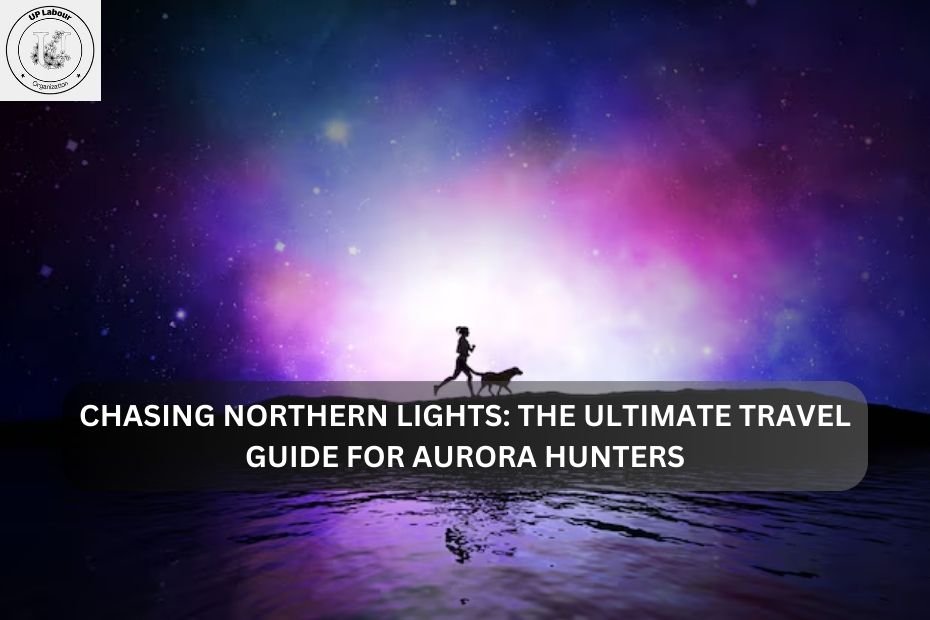The Northern Lights, or Aurora Borealis, are one of nature’s most breathtaking spectacles. With their shimmering colors dancing across the night sky, witnessing the Northern Lights is on many people’s bucket lists. If you’re ready to chase this stunning phenomenon, this guide will help you plan your adventure, from understanding the science behind the lights to the best locations for viewing.
Understanding the Northern Lights
Before diving into travel tips, it’s helpful to know what the Northern Lights are and how they occur. The lights are caused by solar particles colliding with the Earth’s atmosphere. When these charged particles from the sun hit gases in the atmosphere, they create beautiful displays of light. The colors vary from green to pink, red, yellow, blue, and violet, depending on the type of gas involved in the reaction and the altitude at which the collision occurs.
Best Time to See the Northern Lights
Timing is crucial when chasing the Northern Lights. While they can occur at any time of the year, the best viewing is during winter months, specifically from late September to early April. During this time, the nights are longer and darker, which increases your chances of seeing the lights. Keep in mind that clear skies are also essential, so always check the weather forecast before heading out.
Moon Phase Matters
The moon’s brightness can affect your viewing experience. A full moon can wash out the lights, making them harder to see. Aim for a new moon or a crescent moon phase for the best visibility.
Top Locations in the USA for Northern Lights Viewing
The USA is home to some incredible locations for Northern Lights viewing. Here are a few of the best spots:
1. Fairbanks, Alaska
Fairbanks is known as one of the best places to see the Northern Lights. The city is located under the Auroral Oval, a ring-shaped region around the North Pole where the lights are most frequently observed. The clear, dark skies and low light pollution make it an ideal spot. You can join guided tours, visit local hot springs, or even stay in an aurora lodge for a unique experience.
2. Anchorage, Alaska
While Fairbanks might be the most famous, Anchorage is also a great location for Northern Lights viewing. The city offers several vantage points, such as Flattop Mountain and Kincaid Park. Plus, you’ll have access to all the amenities of a larger city while still being close to nature.
3. Minnesota’s Boundary Waters Canoe Area
For those who love the great outdoors, the Boundary Waters Canoe Area in Minnesota is a stunning choice. This remote location provides a perfect backdrop for the Northern Lights. With fewer people and less light pollution, you can immerse yourself in the beauty of the wilderness while enjoying the spectacular night sky.
4. Yellowstone National Park
While Yellowstone is more famous for its geysers and hot springs, it’s also a fantastic place to witness the Northern Lights. The park’s vast, open spaces and minimal light pollution provide excellent conditions for viewing. Just be sure to dress warmly, as temperatures can drop significantly at night.
5. Michigan’s Upper Peninsula
The Upper Peninsula of Michigan, especially areas like the Keweenaw Peninsula, is another great location. With clear lakes and stunning landscapes, the Northern Lights create a beautiful reflection on the water, enhancing the experience.
Preparing for Your Trip
Dress for Success
The Northern Lights are best viewed in the cold, so dressing appropriately is essential. Layering is key; start with a moisture-wicking base layer, add insulating layers like fleece or wool, and finish with a waterproof and windproof outer layer. Don’t forget thermal socks, a warm hat, gloves, and sturdy boots.
Check Aurora Forecasts
Before heading out, it’s a good idea to check the aurora forecast. Websites and apps provide real-time information on solar activity and the likelihood of seeing the lights. Some popular resources include the NOAA Space Weather Prediction Center and the Aurora Service website.
Be Patient
Chasing the Northern Lights requires patience. Sometimes, you may wait for hours without seeing anything. Bring a comfortable chair or blanket, a thermos of hot cocoa, and enjoy the tranquility of the night sky while you wait.
Photography Tips for Capturing the Northern Lights
If you want to capture the magic of the Northern Lights, having the right photography equipment and techniques is crucial. Here are some tips to help you get stunning shots:
1. Use a Tripod
A sturdy tripod is essential for long-exposure shots. Since the lights can appear faint, you’ll need to keep the camera still to capture the colors effectively.
2. Set Your Camera to Manual Mode
To get the best results, switch your camera to manual mode. Set a high ISO (around 800 to 3200), a wide aperture (f/2.8 or lower), and a long exposure time (10 to 30 seconds, depending on the light intensity). Experiment with these settings to find what works best for your equipment.
3. Use a Remote Shutter Release
To prevent camera shake, use a remote shutter release or the camera’s timer function when taking your shots.
4. Include Foreground Elements
To create more dynamic photos, include some foreground elements, like trees, mountains, or lakes. This adds depth and context to your images.
Other Activities While Chasing the Lights
While chasing the Northern Lights is the highlight of your trip, consider other activities to fill your days. Here are some ideas:
1. Dog Sledding
Experience a classic Alaskan adventure by going dog sledding. Many tours are available, providing a unique way to explore the snowy landscapes.
2. Snowshoeing or Cross-Country Skiing
Explore the winter wonderland on snowshoes or cross-country skis. Many parks and trails offer rentals and guided tours for all skill levels.
3. Visit Local Hot Springs
Relax and warm up after a day of outdoor activities by visiting a local hot spring. Soaking in warm waters while surrounded by snow-covered scenery is an unforgettable experience.
4. Attend Local Festivals
If your visit coincides with a local festival, take advantage of the cultural events. Many northern communities host celebrations that include food, music, and activities centered around the Northern Lights.
Staying Safe During Your Adventure
While chasing the Northern Lights can be a magical experience, it’s important to prioritize safety. Here are some tips:
1. Be Aware of Your Surroundings
When venturing into remote areas, always be mindful of your surroundings. Stay on marked trails and keep an eye out for wildlife.
2. Travel in Groups
If possible, travel with others. There’s safety in numbers, and it can be more enjoyable to share the experience with friends or fellow travelers.
3. Inform Someone of Your Plans
If you’re heading into remote areas, inform someone about your plans. Share your itinerary and expected return time in case of emergencies.
4. Carry Essential Gear
Always carry essential gear, including a first aid kit, flashlight, extra food, and a fully charged phone. It’s better to be over-prepared than underprepared.
Conclusion
Chasing the Northern Lights is a journey of wonder and excitement. By understanding the science behind the lights, knowing the best places to view them, and preparing adequately for your trip, you can create unforgettable memories. Whether you’re capturing stunning photographs or simply marveling at the beauty of the night sky, the Aurora Borealis will leave you in awe. So grab your warm clothes, gather your friends, and set out on this incredible adventure. The Northern Lights await!

